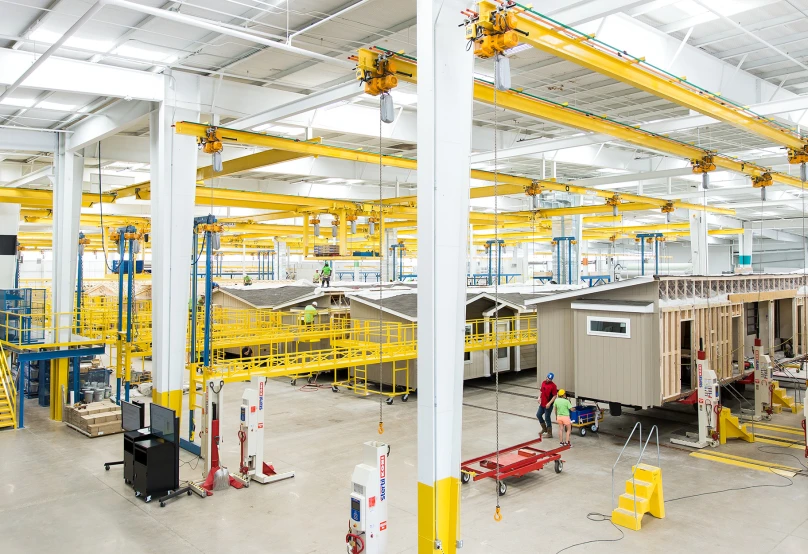Social Responsibility
The Intersection of Attainability and Sustainability
How Clayton® is Building for a Better Tomorrow
November 13, 2023

At Clayton, we are committed to driving change through attainable, sustainably built housing with low ownership cost. We are driving attainable homeownership in the way we build and the homes we build by prioritizing efficiency and innovation during the construction process and providing homes at an attainable purchase price with a lower cost of ownership through long-term utility savings, like in our new eBuilt™ homes.
The Way We Build
Waste in homebuilding can result in increased costs that challenge attainability in housing. By being intentional about purchasing material, material usage and building practices, Clayton’s off-site home building facilities are able to reduce waste in our operations, helping to reduce the environmental impact of sending materials to the landfill while contributing to more attainable housing.
To address the environmental impacts of our business, we pursue ISO® 14001:2015 certification1 at all Clayton home building facilities and Clayton Supply operations. ISO 14001 is the gold standard of environmental management systems and provides a continuous improvement framework for companies to track, monitor, and improve on environmental objectives. This means that each of Clayton’s homebuilding and supply facilities target sustainability objectives related to diverting waste from the landfill, improving their energy efficiency and reducing water usage. In 2022 alone, Clayton home building and supply facilities diverted over 51,000 tons of waste from landfills through recycling efforts. That’s comparable to more than 408,000 residential-sized garbage cans not going to the landfill.
Additionally, Clayton also benefits from the creativity and innovation of our team members. From developing in-house water recycling systems to repurposing scrap sheetrock that keeps insulation secured during a home’s delivery, Clayton team members are driving efficiency by saving materials and reducing waste in the building process. This innovation-driven growth leads to reduced material costs and contributes to more attainable housing.
The Homes We Build
We know that affordability is more than the initial purchase price of the home, it also includes the long-term cost of home ownership. That’s why we have had a long-term focus on building energy efficient homes that enable our homeowners to save on monthly utility expenses. In fact, since 2005, Clayton has built over 142,000 Energy Star® certified homes. As homebuilders, we believe it is our responsibility to democratize high-performance energy efficiency at an affordable price point. It is that belief and our past experience that has led us to our next evolution in home energy efficiency, eBuilt™ homes.
Clayton eBuilt® homes are built to they US Department of Energy’s (DOE) Zero Energy Ready Home™ specifications and equipped with enhanced energy efficient features that can save customers up to 40 to 50 percent on energy bills annually2.
Through leveraging innovation in the building process and reinvesting available credits and incentives to help offset material costs, Clayton can deliver a high-performance energy efficient home at an attainable price point.
When paired with a solar energy system, an eBuilt™ home has the ability to offset up to 100% of the home’s energy use.
Price is one of the most common barriers for customers seeking sustainable features in a home. At Clayton, we recognize that our focus on sustainability can serve as a strategy to support attainability in the homes we build. By finding innovative ways to reduce waste and build more efficiently, we incur less costs during the production process, allowing us to deliver attainable housing and allowing more people to experience the benefits of homeownership.
Learn more about Clayton's social responsibility efforts at claytonhomes.com/social-responsibility.
1 ISO® is the registered trademark of the International Organization for Standardization 2 ZERH Logo Use Guidelines (energy.gov) ENERGY STAR® and the ENERGY STAR® mark are registered trademarks owned by the U.S. Environmental Protection Agency.
© 1998-2025 Clayton.
